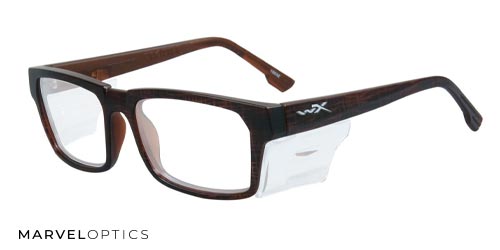Prescription safety glasses play a crucial role in protecting the vision and safety of employees who require corrective eyewear in hazardous work environments. However, determining who bears the financial responsibility for these specialized glasses can sometimes be unclear. This article will explore who pays for safety glasses, focusing on the employer’s role and legal obligations.
The Employer’s Obligations
Employers are legally obligated to ensure a safe work environment for their employees, which includes providing appropriate personal protective equipment (PPE) based on the nature of the job. Prescription safety glasses fall under the category of PPE and should be considered when necessary.
OSHA Guidelines
The Occupational Safety and Health Administration (OSHA) provides guidelines that employers must follow to ensure workplace safety. OSHA mandates that employers must provide PPE, including z87 prescription safety glasses, at no cost to the employee. These guidelines aim to reduce the risk of occupational hazards and promote employee well-being.
Exceptions and Limitations
While the general consensus is that employers should cover the cost of prescription safety glasses, there are certain exceptions and limitations to consider. For example, if an employee already wears regular prescription glasses, the employer might only be obligated to pay for the additional cost associated with the safety features. However, it is essential to consult local laws and regulations, which may vary depending on the jurisdiction.

Insurance Coverage
In some cases, insurance coverage may help mitigate the cost burden for the employer and the employee. For example, some companies provide vision insurance that covers a portion of the expenses related to prescription safety glasses. However, the extent of coverage and the specific insurance policies can vary significantly. Therefore, employees should review their insurance benefits and discuss coverage options with their employer to clarify expenses.
Employer-Employee Collaboration
Open communication and collaboration between employers and employees are crucial when determining who pays for prescription safety glasses online. Both parties should discuss the legal obligations, company policies, and potential financial arrangements. In addition, employers should provide clear guidelines on their reimbursement processes, if applicable, and employees should inquire about available options.
Final Thoughts
By prioritizing workplace safety and complying with legal obligations, employers can protect their employees’ well-being and foster a safety culture.
FAQs
What if the employer refuses to pay for prescription safety glasses?
Employees should explore their rights and options if an employer refuses to cover the cost of prescription safety glasses despite the legal obligations or guidelines in place. This may involve discussing the issue with their employer, seeking legal advice, or filing a complaint with the relevant labor or occupational health and safety authorities.
What should employees do if they need prescription safety glasses but cannot afford them?
Employees who cannot afford prescription safety glasses should communicate their concerns to their employers. Employers may have reimbursement programs or alternative solutions in place to assist employees in obtaining the necessary safety eyewear. Additionally, employees can explore options such as insurance coverage, assistance programs, or seeking advice from local labor organizations.
Are there any government programs or grants available to assist with the cost of prescription safety glasses?
Depending on the jurisdiction, government programs or grants might be available to assist with the cost of prescription safety glasses. Employees can inquire about such programs through relevant government agencies, labor departments, or occupational health and safety authorities.
Can employees use their vision insurance to cover the cost of prescription safety glasses?
Yes, employees can often use their vision insurance to help cover the cost of prescription safety glasses. However, employees need to review their insurance policy and benefits to understand the extent of coverage for safety eyewear. They should also communicate with their employer to ensure that the insurance coverage aligns with company policies or arrangements.
How can employers and employees collaborate to determine the financial responsibility for prescription safety glasses?
Open communication and collaboration between employers and employees are essential. If applicable, employers should provide clear guidelines on reimbursement processes, and employees should inquire about available options. In addition, both parties should engage in discussions to understand the legal obligations, company policies, insurance coverage, and any potential financial arrangements to determine the specific responsibilities and agree upon a mutually beneficial solution.








